DigitalGlobe, Inc. (NYSE: DGI), a leading global provider of commercial high-resolution earth observation and advanced geospatial solutions, today announced that the U.S. National Geospatial-Intelligence Agency (NGA) has executed the next year of the Global Enhanced GEOINT Delivery (Global EGD) program under the NGA EnhancedView contract starting Sept. 1, 2015.
This agreement builds on more than a decade of service providing the NGA and its customers with unclassified, sharable, high-resolution imagery in support of operational planning, emergency response, and situational awareness.
Global EGD products are available in ready-to-use formats, and the platform enables access to more than 6 billion square kilometers of high-resolution earth imagery to thousands of government users. DigitalGlobe keeps Global EGD current by uploading more than 1 million square kilometers of new imagery every day. The median delivery timeline for this imagery is less than four hours after downlink, and as quickly as 11 minutes. This next year agreement for Global EGD includes even easier access and expanded content for government end users in classified domains.
“We are proud to continue delivering the Global EGD service to the NGA and its end users around the globe,” said Jeffrey R. Tarr, DigitalGlobe President and Chief Executive Officer. “This program exemplifies the value that DigitalGlobe provides with our best-in-class commercial imagery that is unique in its ability to meet demanding U.S. Government requirements.”
For more information on the Global EGD platform, or to sign up for access using your .gov or .mil email address, please visithttps://evwhs.digitalglobe.com.
About DigitalGlobe
DigitalGlobe is a leading provider of commercial high-resolution earth observation and advanced geospatial solutions that help decision makers better understand our changing planet in order to save lives, resources and time. Sourced from the world's leading constellation, our imagery solutions deliver unmatched coverage and capacity to meet our customers' most demanding mission requirements. Each day customers in defense and intelligence, public safety, civil agencies, map making and analysis, environmental monitoring, oil and gas exploration, infrastructure management, navigation technology, and providers of location-based services depend on DigitalGlobe data, information, technology and expertise to gain actionable insight.
Special note about forward-looking statements
Certain statements contained herein and in other parts of our reports, filings, and public announcements may contain or incorporate forward-looking statements within the meaning of the Private Securities Litigation Reform Act of 1995, as amended. Forward-looking statements relate to future events or future financial performance. We generally identify forward-looking statements by terminology such as “may,” “will,” “should,” “expects,” “plans,” “anticipates,” “could,” “intends,” “target,” “projects,” “contemplates,” “believes,” “estimates,” “predicts,” “potential,” “continue” or “looks forward to” or the negative of these terms or other similar words, although not all forward-looking statements contain these words.
Any forward-looking statements are based upon our historical performance and on our current plans, estimates and expectations. The inclusion of this forward-looking information should not be regarded as a representation by us that the future plans, estimates or expectations will be achieved. Such forward-looking statements are subject to various risks and uncertainties and assumptions. A number of important factors could cause our actual results or performance to differ materially from those indicated by such forward-looking statements, including: the loss, reduction or change in terms of any of our primary contracts or decisions by customers not to exercise renewal options; the availability of government funding for our products and services both domestically and internationally; changes in government and customer priorities and requirements (including cost-cutting initiatives, the potential deferral of awards, terminations or reduction of expenditures to respond to the priorities of Congress and the administration, or budgetary cuts resulting from Congressional committee recommendations or automatic sequestration under the Budget Control Act of 2011); the risk that U.S. government sanctions against specified companies and individuals in Russia may limit our ability to conduct business with potential or existing customers; the outcome of pending or threatened litigation; the loss or impairment of any of our satellites; delays in the construction and launch of any of our satellites or our ability to achieve and maintain full operational capacity of all our satellites; delays in implementation of planned ground system and infrastructure enhancements; loss or damage to the content contained in our imagery archives; interruption or failure of our ground system and other infrastructure; decrease in demand for our imagery products and services; increased competition, including possibly from companies with substantial financial and other resources and services, that may reduce our market share or cause us to lower our prices; our inability to fully integrate acquisitions or to achieve planned synergies; changes in satellite imaging technology; our failure to obtain or maintain required regulatory approvals and licenses; changes in U.S. or foreign law or regulation that may limit our ability to distribute our imagery products and services; the costs associated with being a public company; and other important factors, all as described more fully in our filings with the Securities and Exchange Commission, including our Annual Report on Form 10-K for the year ended December 31, 2014.
We undertake no obligation to update any forward-looking statement to reflect events or circumstances after the date on which the statement is made or to reflect the occurrence of unanticipated events. Readers are cautioned not to place undue reliance on any of these forward-looking statements.
Contact:
Media Contact
Edelman for DigitalGlobe
Traci Brodnax, 212-729-2138
Email Contact
or
Investor Relations Contact
Fred Graffam, 303-684-1692
Email Contact



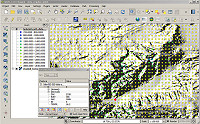
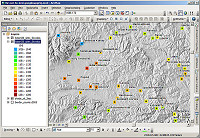
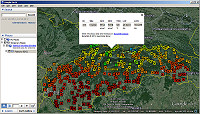
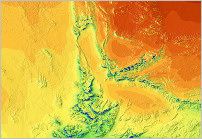
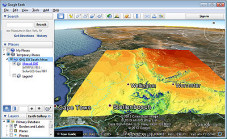




 Michel Paradis is known as the father of Geomaticscreating the term in the 1980s as a unifying umbrella for today’s multi-disciplinary challenges. The vision of Geomatics was to master individual technologies and geographic data collection techniques with a focus on the synergies obtained from when properly combining digital technologies from different disciplines.
Michel Paradis is known as the father of Geomaticscreating the term in the 1980s as a unifying umbrella for today’s multi-disciplinary challenges. The vision of Geomatics was to master individual technologies and geographic data collection techniques with a focus on the synergies obtained from when properly combining digital technologies from different disciplines.



